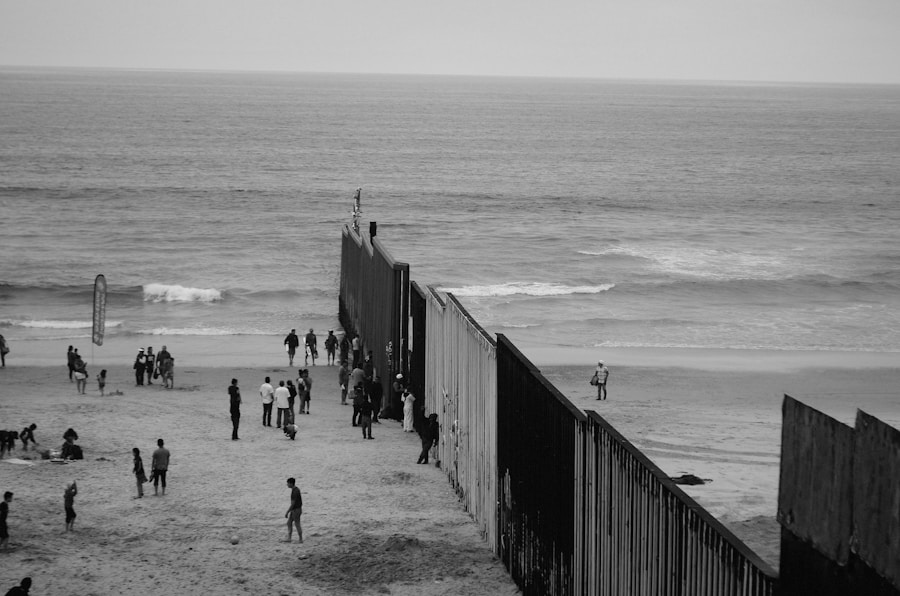Border politics is a complex and multifaceted arena that encompasses a variety of actors, both state and non-state, each playing a significant role in shaping the dynamics of territorial governance and international relations. State actors, typically represented by national governments and their agencies, have traditionally been the primary authorities in managing borders, enforcing laws, and regulating the movement of people and goods. However, the rise of globalization, transnationalism, and regional integration has led to the emergence of non-state actors, including non-governmental organizations (NGOs), multinational corporations, and even informal groups such as smuggling networks and local communities.
These non-state entities often challenge or complement the authority of state actors, leading to a complex interplay that defines contemporary border politics. The significance of understanding both state and non-state actors in border politics lies in their differing motivations, strategies, and impacts on border management. State actors are primarily concerned with sovereignty, security, and the enforcement of national laws, while non-state actors may prioritize humanitarian concerns, economic interests, or social justice.
This divergence can lead to cooperation or conflict, depending on the context and the specific issues at stake. As borders become increasingly porous due to technological advancements and shifting political landscapes, the interactions between these two categories of actors are more critical than ever in determining the future of border governance.
Key Takeaways
- State and non-state actors play crucial roles in border politics, influencing policies and shaping the dynamics of border regions.
- State actors, such as governments and law enforcement agencies, have the authority to enforce border regulations and control the movement of people and goods across borders.
- Non-state actors, including non-governmental organizations, criminal organizations, and local communities, also have significant influence on border politics through their activities and interactions with state actors.
- Interactions and conflicts between state and non-state actors in border politics can lead to power struggles, human rights abuses, and security threats in border regions.
- The impacts of state and non-state actors on border politics can have far-reaching consequences, affecting national security, economic development, and the well-being of border communities. Future trends and considerations for state and non-state actors in border politics include the need for collaboration, transparency, and accountability to address the complex challenges of border governance.
The Role of State Actors in Border Politics
Agencies and Enforcement Mechanisms
For instance, the United States Customs and Border Protection (CBP) plays a crucial role in managing the U.S.-Mexico border, employing thousands of personnel to monitor crossings and enforce immigration laws. This agency’s activities reflect the state’s priorities regarding national security and economic interests, illustrating how state actors shape border politics through legislation and enforcement mechanisms.
Diplomatic Negotiations and International Agreements
State actors engage in diplomatic negotiations to address cross-border issues. Treaties and agreements between nations can significantly influence border politics by establishing frameworks for cooperation on security, trade, and migration. The Schengen Agreement in Europe is a prime example of how state actors can collaborate to create a shared border policy that facilitates free movement while maintaining security standards.
Challenges in Border Management
However, these agreements can also lead to tensions when states perceive threats to their sovereignty or when domestic political pressures challenge existing arrangements. The interplay between state authority and international obligations often complicates border management strategies.
The Role of Non-State Actors in Border Politics

Non-state actors have increasingly become influential players in border politics, often filling gaps left by state authorities or challenging their decisions. NGOs frequently advocate for human rights and humanitarian assistance at borders, particularly in contexts where state policies may be perceived as overly restrictive or punitive. Organizations like Médecins Sans Frontières (Doctors Without Borders) provide critical medical care to migrants and refugees at borders, highlighting the humanitarian crises that can arise from state policies.
Their presence underscores the importance of addressing human dignity and welfare in discussions about border governance. In addition to NGOs, multinational corporations also play a significant role in shaping border politics through their economic activities.
For example, the North American Free Trade Agreement (NAFTA) was heavily influenced by corporate interests seeking to streamline trade between the U.S., Canada, and Mexico. These economic considerations can lead to tensions with local communities or labor groups that may feel marginalized by such agreements. Non-state actors thus contribute to a dynamic landscape where economic interests intersect with social justice concerns.
Interactions and Conflicts between State and Non-State Actors in Border Politics
The interactions between state and non-state actors in border politics can be characterized by both collaboration and conflict. In many cases, state authorities recognize the value of non-state actors in addressing complex border issues that require specialized knowledge or resources. For instance, during humanitarian crises such as mass migrations due to conflict or natural disasters, states may partner with NGOs to provide essential services to affected populations.
This collaboration can enhance the effectiveness of border management efforts while also addressing humanitarian needs. However, conflicts often arise when non-state actors challenge state authority or when their activities are perceived as undermining national interests. For example, grassroots movements advocating for migrant rights may confront state policies that criminalize unauthorized crossings or detain individuals seeking asylum.
In some instances, these conflicts escalate into protests or legal battles that draw public attention to the broader implications of border policies. The tensions between state sovereignty and human rights advocacy illustrate the complexities inherent in border politics today.
Impacts of State and Non-State Actors on Border Politics
The impacts of both state and non-state actors on border politics are profound and far-reaching. State actors shape the legal framework governing borders, influencing everything from immigration quotas to trade tariffs. Their decisions can have immediate effects on individuals’ lives—determining who can enter a country or what goods can be imported.
For instance, recent changes in U.S. immigration policy under various administrations have led to significant shifts in migration patterns from Central America, affecting not only those seeking refuge but also the economies of both sending and receiving countries. Non-state actors also exert considerable influence on border politics by raising awareness about issues that may be overlooked by state authorities.
Their advocacy efforts can lead to changes in public opinion and policy reforms. For example, campaigns led by human rights organizations have successfully pressured governments to reconsider harsh immigration laws or improve conditions for asylum seekers. Additionally, non-state actors often serve as watchdogs, holding state authorities accountable for their actions at borders.
This dynamic creates a feedback loop where both types of actors continuously shape each other’s strategies and responses.
Future Trends and Considerations for State and Non-State Actors in Border Politics

Technological Advancements and Ethical Concerns
While these advancements may enhance security measures, they also raise ethical concerns regarding privacy and civil liberties.
Climate Change and Migration Patterns
Climate change is expected to exacerbate migration patterns, leading to new challenges for both state and non-state actors involved in border politics. As environmental conditions deteriorate in certain regions, populations may be forced to migrate in search of better living conditions. This phenomenon will require states to adapt their policies while considering the humanitarian implications highlighted by non-state organizations advocating for displaced individuals’ rights.
Navigating the Complex Landscape of Border Politics
In conclusion, the interplay between state and non-state actors in border politics is complex and evolving. As these dynamics continue to shift in response to global trends such as technological advancements and climate change, both types of actors will need to navigate an increasingly intricate landscape characterized by cooperation, conflict, and negotiation. Understanding these interactions will be crucial for developing effective policies that address the multifaceted challenges posed by contemporary border issues.
In a related article discussing the philosophy of language and knowledge, Russell delves into the complexities of how language shapes our understanding of the world around us. This article explores the intricate relationship between language and knowledge, shedding light on how our perceptions are influenced by the words we use. To read more about this fascinating topic, check out this article.
FAQs
What are state actors in border politics?
State actors in border politics refer to the government entities and officials that are involved in making and implementing policies related to border control, immigration, and international relations. This can include government agencies such as border security forces, customs and immigration departments, and diplomatic representatives.
What are non-state actors in border politics?
Non-state actors in border politics refer to individuals, organizations, and groups that are not part of the government but still have an influence on border-related issues. This can include non-governmental organizations (NGOs), advocacy groups, international organizations, and private companies involved in border security and immigration services.
How do state actors influence border politics?
State actors influence border politics through the creation and enforcement of laws and policies related to border control, immigration, and international trade. They also engage in diplomatic negotiations with other countries to address border-related issues and may deploy security forces to patrol and protect the border.
How do non-state actors influence border politics?
Non-state actors influence border politics through advocacy, lobbying, and direct action to shape public opinion and government policies related to border control, immigration, and refugee rights. They may also provide humanitarian aid and support services to migrants and refugees at the border.
What are some examples of state actors in border politics?
Examples of state actors in border politics include border security agencies such as the U.S. Customs and Border Protection, the Border Security Force in India, and the Border Guard in Bangladesh. Additionally, diplomatic representatives and government officials involved in international negotiations and treaties related to border issues are also considered state actors.
What are some examples of non-state actors in border politics?
Examples of non-state actors in border politics include international organizations such as the United Nations High Commissioner for Refugees (UNHCR), non-governmental organizations (NGOs) like Amnesty International and Human Rights Watch, and advocacy groups such as the American Civil Liberties Union (ACLU) and Border Angels. Additionally, private companies involved in border security and immigration services also play a role as non-state actors.






















+ There are no comments
Add yours